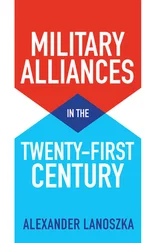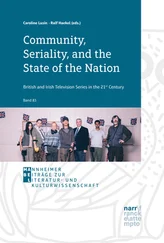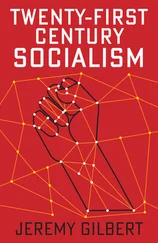The fourth feature is the global nature of the determining forces of today’s world. As I have mentioned earlier, there are broadly two contending and even contradictory forces in the world in which we live today: on the one hand are the forces of convergence, the increasing knitting-together of the world through globalization, modern communications and trade, and on the other are the opposite forces of disruption, of religious polarization, of the talk of the clash of civilizations, and of terrorism. The two forces, one pulling us together, the other pulling us apart, are concurrent phenomena of our times, and the use by one set of forces of the instruments of the other (the terrorists of 9/11 and 26/11 using the instruments of globalization and convergence) is emblematic of the phenomenon. We have to recognize both the positive and negative forces of the world today, and, from it, a consciousness of the increasing mutual interdependence that characterizes our age.
People everywhere therefore have a growing stake in international developments. To put it another way, the food we grow and we eat, the air we breathe, and our health, security, prosperity and quality of life are increasingly affected by what happens beyond our borders. And that means we can simply no longer afford to be indifferent about the rest of the world, however distant other countries may appear.
Now these four broad aspects are descriptive of global governance, rather than prescriptive. But from such a description, it is clear that global governance rests on the realization that security is not indeed just about threats from enemy states or hostile powers, but that there are common phenomena that cut across borders and affect us all. Nor can they be solved by any one country or any one group of countries, which make them unavoidably the shared responsibility of humankind.
This idea has gained strong ground through the 1990s and through the first part of this century. There is an obvious list of such problems: terrorism itself, the proliferation of weapons of mass destruction, of the degradation of our common environment, of climate change (quite obviously because we cannot put up a fence in the sky to sequester our own climate), of persistent poverty and haunting hunger, of human rights and human wrongs, of mass illiteracy and massive displacement. There are financial and economic crises (because the financial contagion becomes a virus that spreads from one country to others), the risk of trade protectionism, refugee movements, drug trafficking. And we must not overlook epidemic disease. Take the SARS epidemic in China: initially there was an attempt to keep it quiet, but it was very easy for the virus to hop on a plane and show up in Toronto, and suddenly it became a global phenomenon, no longer something that could be contained in any one country. The same is true of AIDS, which travelled from the Congo to California and on to the world’s consciousness, just as it is true of swine flu (H1N1) today.
The growing list of global ‘problems without passports’ also calls for solutions that cross frontiers. Individual countries may prefer not to deal with such problems directly or alone, but they are impossible to ignore. So handling them together internationally is the obvious way of ensuring they are tackled; it is also the only way. Some scholars of international affairs have begun to speak of an idea they call ‘responsible sovereignty’, the notion that nations must cooperate across borders to safeguard resources and to tackle common threats.
This kind of thinking is also reflective of the change in the way the world thinks about security. After 1945 and throughout the Cold War, the concept of security was taken as relating to nation states seeking to protect their territorial sovereignty and national interests from the threat or use of force by foreign powers. The security debate was framed in terms of defence, arms build-ups and military alliances. With the end of the Cold War and the receding prospect of superpower conflict, security theorists began to focus on threats to security based upon internal conflicts and internecine wars — civil wars, ethnic conflict, secessionist struggles and terrorist attacks — as well as the continuing dangers of the nuclearization of ‘rogue states’, those assumed to be more predisposed to using nuclear weapons than those who had developed them decades earlier.
These threats, however, are still seen in terms of the security of sovereign states. In the context of global governance, however, a new concept has emerged: the concept of ‘human security’, a notion that focuses more on the protection of the individual than on the sovereignty of the state. In the words of the 2003 report of the Commission on Human Security, security involves the need ‘to protect the vital core of all human lives in ways that enhance human freedoms and human fulfillment’. The commission argues that ‘the security of one person, one community, one nation rests on the decisions of many others — sometimes fortuitously, sometimes precariously’, and that ‘policies and institutions must find new ways to protect individuals and communities’.
How can such security be ensured? Clearly, there is an ineluctable link to the emerging concept of global governance. Human security cannot be the pursuit of any one nation, however rich or powerful it might be. It manifestly requires international cooperation within global bodies, as well as action by international and interstate organizations such as the United Nations itself (including through the operations of specialized agencies working on health, children, labour standards, etc., and the negotiation, conclusion and application of international treaties and conventions). What about the old-fashioned idea of security in the military sense? That is no exception: the UN conducts peacekeeping missions, and so do regional organizations like ECOWAS in West Africa and NATO in Europe, almost always acting under a mandate from the world body. These are all examples of collective military action in a global governance context, and they involve nation states ceding some degree of control over the deployment of their national defence and security forces to supranational institutions. Even a non-UN-authorized mission like that of ISAF, the International Security Assistance Force, in Afghanistan involves contributions from several countries, all in the name of a higher global good.
So the world has evolved significantly towards greater global governance since the end of the Second World War. And yet the global governance structures of today still reflect the realities of 1945 and not of 2012. As we look around the world of 2012, we cannot fail to note the increase in the number of major powers across the world since the structures of the international system were put in place in 1945. It is an undeniable fact that the emerging powers have moved very much from the periphery to the centre of global discourse and global responsibility, and they have now a legitimate and an increasingly voluble desire to share power and responsibility in the global system. So, too, do the so-called social forces — NGOs, civil society movements — which have become impossible to ignore in any discussion of global governance, but which lie outside the scope of the present analysis.
India feels very strongly that there is a clear need for an expansion of the Security Council in both categories — permanent and non-permanent. But it also sees the Security Council as part of a broader process of renewing the United Nations. Like many developing countries, India would like to see the General Assembly strengthened as the primary intergovernmental legislative body, which it is not yet; it has become too often a rhetorical forum, prone to declaratory effulgences without effect, rather than one which acts as a legislative body driving the action of the UN organization. The UN’s Economic and Social Council too should become a more meaningful development-oriented body, and a serious instrument of development governance. A greater sharpening is also required in the focus and the operational efficiency of the UN funds, agencies and programmes, whose effectiveness is so important for so many of the world’s vulnerable and developing people.
Читать дальше












